Fascinating fasciation
I shared a picture from Meg Williamson, plant pathologist at Clemson University, of a deformation on foxglove and asked what you thought it was. After hearing from y’all, I have to say you are much better diagnosticians than I am.
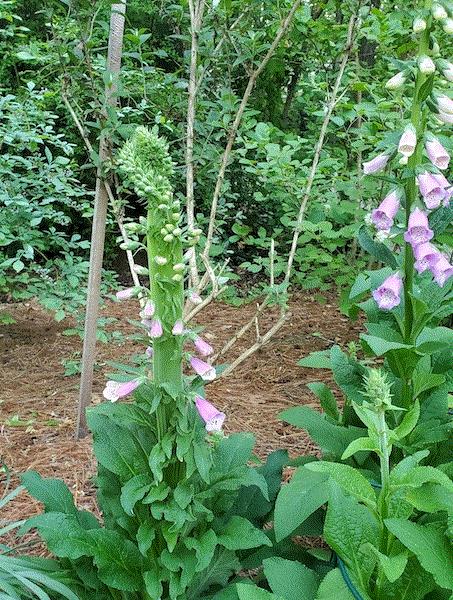
The answer is fasciation. Thanks to those of you who played this “What the … ?” mystery game: Marilyn Barlow, Kylee Baumle, Andrew Beckman, Ann Bergquist, Jim Borland, Timothy Boyle, Jim Brady, Jill Calabro, Richard Criley, William Darlington, Hugh Davis, Andrew Derksen, Carol Englender, John Esser, Kathy Foreman, C. L. Fornari, Ken Fry, Patricia Gaskin, Deborah Groth, Frank Hale, Keith Hansen, Giles van Hees, Steve Jeffers, Deborah Lalurmondier, Mike Klopmeyer, Daria McKelvey, Cynthia Mckenney, Claude Newport, Jeff Otto, Bob Polomski, John Ruter, Nicole Sanchez, Rob Welsh, Virginia White, Stew Winchester and Mike Woodward. It’s great hearing from all of you!
Apparently fasciation is quite rare and common at the same time. Common in the sense that many plant species can be affected so you may notice the condition if you know what to look for. When I was pulling weeds in my so-called “back yard” last week, I found an oxalis that seemed to have suffered from fasciation. Fasciation is also rare because only a very low percentage of a population can be affected. If Meg hadn't introduced it to me, I would’ve never noticed fasciated plants.
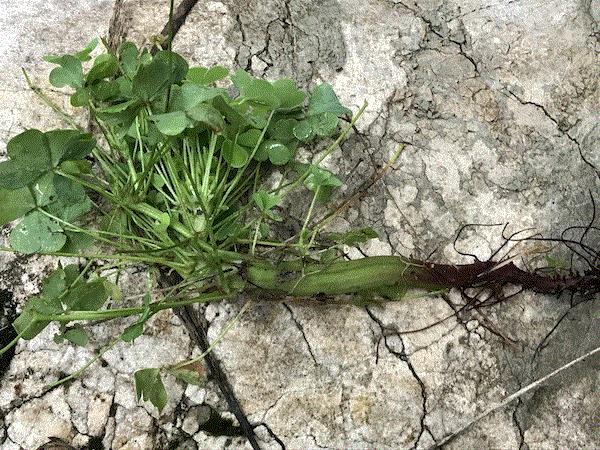
Y’all know you can join just about any interest group on Facebook, right? If you’re looking to connect with your fellow fasciation enthusiasts, check out the Fasciation Fascination public group C.L. Fornari, the Garden Lady, had introduced to me. If you have a Facebook page that you had ignored for a long time but were too lazy to deactivate, drop me a line and join my private group, I-haven't-looked-at-my-Facebook-page-since-Vincent-and-Jeannie-set-it-up-for-me-ten-years-ago. I told my kid that the inactive account is actually bait to help the FBI catch those Russian hackers or other bad actors.
Even if you are connected to the Russian mafia or FSS, don’t you ever think about selling fasciated flower stems to ikebana flower designers! Richard Criley, Emeritus Professor of Horticulture at University of Hawaii at Manoa, and I have that market CORNERED. Stay out if you know what’s good for you.
But don't feel bad about not becoming an instant millionaire! Here is a challenge from Daria McKelvey, Supervisor of the Kemper Center for Home Gardening at the Missouri Botanical Garden, that can instantly make you feel accomplished: try saying “fascinating foxglove fasciation” five times and fast. Go!

Fasciation vs. phyllody
Fasciation is typically an enlarged and flattened deformation. No one knows for sure what causes the malformation—it could be a genetic mutation, hormonal imbalance, environmental conditions that cause damage or stress, and infection by a bacterium, virus, phytoplasma, fungus, insect or mite. Seems to me like there is not much anyone can do to resolve fasciation until we know the cause of the problem.
Steve Jeffers, my pathologist counterpart at Clemson University, introduced me to a condition that I have never heard of but I definitely will confuse with fasciation— phyllody.
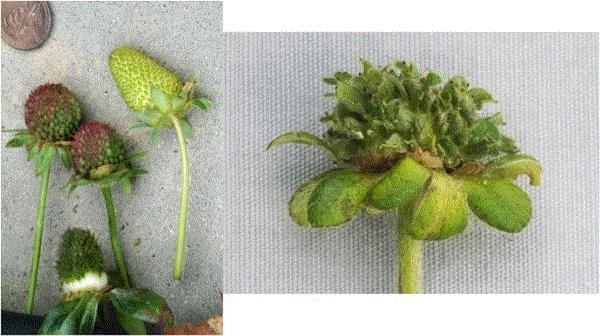
Phyllody on strawberries. (Photo credit: Steven Koike, University of California Cooperative Extension)
Phyllody occurs when tissues that are supposed to develop into a flower turn into leafy tissues instead. Phyllody is caused by a phytoplasma or virus (some of them are vectored by insects, such as leafhoppers), or by environmental conditions that caused a hormonal imbalance. Pruning off the affected tissues or pulling up the infected plants seem to be the only viable management option for phyllody.
There is a third kind of abnormal growth—virescence, which is an abnormal expression of green pigment in tissues that are normally not green. Floral virescence turns normally colorful flowers into green flowers. Virescence is typically associated with phyllody and caused by similar agents.
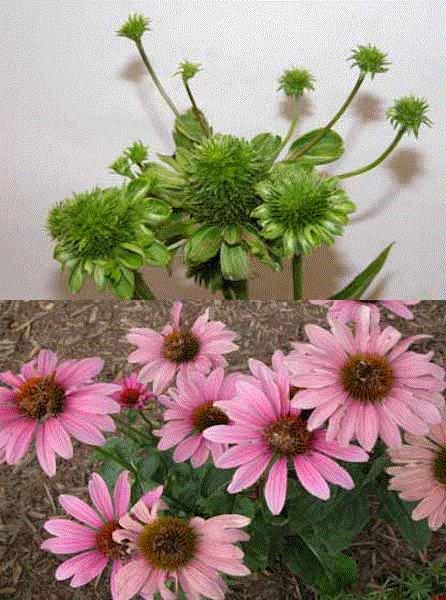
Floral virescence. (Photo credit: USDA-ARS, Molecular Plant Pathology Lab)
Both phyllody and virescence are relatively common phenomenon, at least common enough that I know I have seen them before, even if I didn't know what they were called. Despite my wife’s dog’s high opinion of me, I can’t know everything.

How to attract aphid killers
Joy Chanin, a Master Gardener Volunteer in Cobb County, Georgia, contacted me last week asking about natural or homemade sprays that can be used to control aphids in home gardens. I provided my typical recommendations of horticultural oil, insecticidal soap and pyrethrins, and warned against using homemade soap solutions for insect control on tender plants.
And I told Joy about attracting natural enemies to the garden by planting oleanders, which often house a huge number of oleander aphids. The aphids then attract a large number of parasitoids and predators, such as the parasitoid Lysephlebus testaceipes, that caused the mummies in this picture. The natural enemies produced from these oleander aphids spread to other plants in the garden and control other aphids. Since oleander aphids only attack oleanders, there is no risk of them causing damage on other plants. Unless, of course, if you want to keep the oleanders free of aphids.
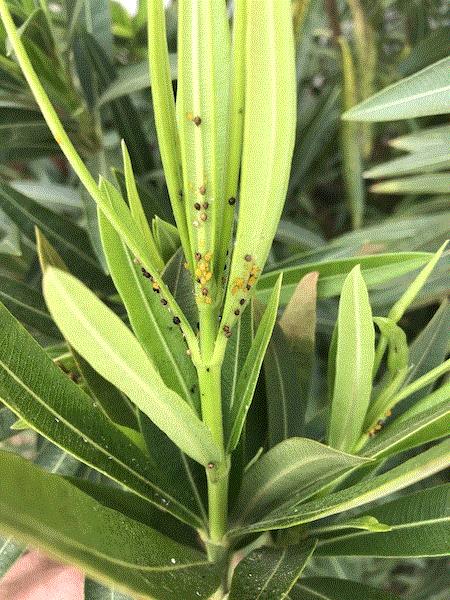
One thing we also talked about is the difficulty of maintaining oleanders in Cobb County (USDA plant hardiness Zone 7b). I wasn’t really thinking about other more suitable plant species, but then I just hit my forehead and went, “Duh!” The other name of oleander aphid is milkweed aphid. So, another option is to grow milkweed, like these in my garden that are covered with oleander aphids, ladybeetles and syrphid fly larvae. Several milkweed species can survive where oleanders cannot.
This concept of attracting, retaining and building natural enemies using plants that can support non-pest herbivores is not a new one. Banker plant systems used in some greenhouses and natural enemy refuges or stripes used in some nurseries, vegetable fields, orchards and vineyards are based on the same idea. One of the most popular banker plant systems is the bird cherry-oat aphid system, where oat or wheat seedlings are used to grow a population of bird cherry-oat aphids, which is then used to build a parasitoid (usually an Aphidius species) population. When the banker plants are put into a greenhouse, they can continue to produce parasitoids that spread to the rest of the greenhouse and kill aphids of other species, such as green peach aphid or melon aphid. Because bird cherry-oat aphid only feeds on grassy crops, you don't have to worry about them becoming a problem on your broadleaf plants.
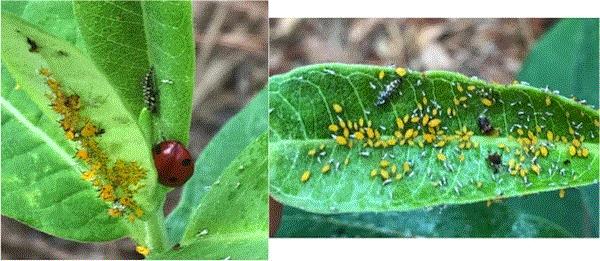
A pretty smart system, and effective too. One grower I worked with installed this banker plant system and saw an 80% reduction in his aphid sprays that season. The grower has since developed his own banker plant production facility for use throughout the operation. Seeing certainly is believing!

Downy mildew named in honor of Margery Daughtrey
The last piece of news for this week is a joyful one.
If you have been active in the floriculture industry, you've probably interacted with or at least heard of Margery Daughtrey, senior extension associate at Cornell University’s Long Island Horticulture Research and Extension Center. Margery has helped develop disease management tools and programs for growers around the country for more than 30 years. Her recent work on impatiens downy mildew has helped us combat this dreaded disease effectively.

Margery Daughtrey, the world famous plant pathologist. (Photo credit: Cornell University)
Margery and her colleagues recently published a paper describing three new downy mildew species associated with ornamental plants. In honor of Margery’s contribution to the ornamental industry and the science of phytopathology, the species isolated from cleome is named Hyaloperonospora daughtreyae. Although scientists have named species after people since the beginning of taxonomy, this honor is reserved only for the most deserving ones.
What a great honor! Congratulations, Margery.
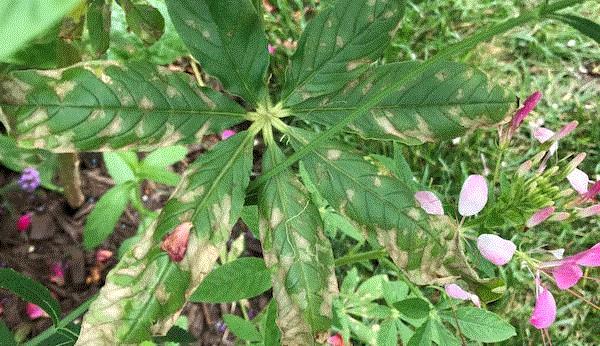
A cleome plant infected with the new downy mildew. (Photo credit: Cornell University)





See y'all next time!

JC Chong
Professor of Entomology at Clemson University
This e-mail received by 23,030 subscribers like you!
If you're interested in advertising on PestTalks contact Kim Brown ASAP!